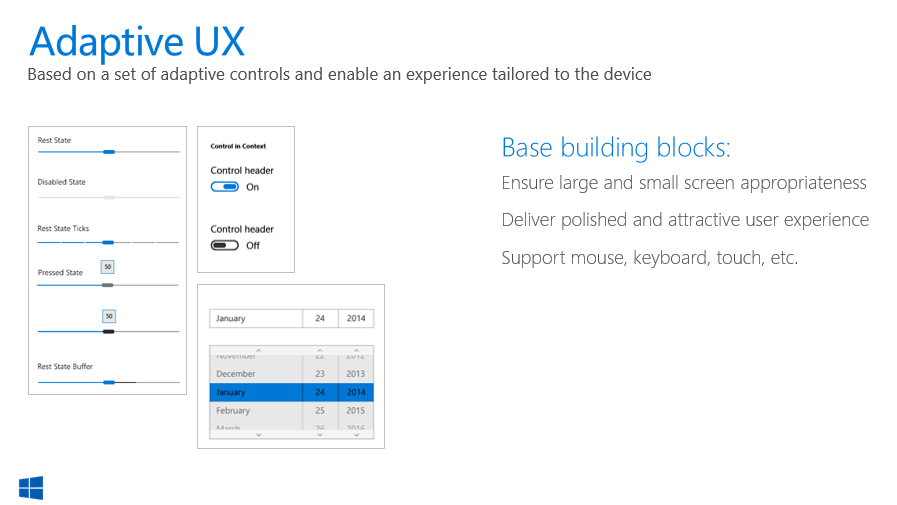
With Microsoft's plans for Windows Phone to be rolled into the 'universal' Windows 10 and with almost every device due the update, everything that happens with '10' is now very relevant here. In no particular order:
- The official Windows 10 SDK and Hardware tools for developers have been announced. The SDK (Software Development Kit) is what will let developers create programs specifically tailored to Windows 10. It's highly recommended that would be developers (and including anyone wanting to play with the emulator) join the Windows Insider Program, if they haven’t already, plus they'll need to be on the latest version of Windows 10 Technical Preview.
- Adaptive UX, part of the SDK, is a set of adaptive controls that supports mouse, keyboard and touch users, essentially making a single UI adapt to whichever device and form factor is being used.

- DirectInk is a set of routines that developers can use in an application to capture pen input/handwriting recognition. Windows 10 includes a new drawing control and low-latency hardware support when adding handwritten content to a page. Pressure sensitivity and palm recognition are both included as well.
- New toggles and shortcuts have been added to 'Action Center' in Windows 10, including Flashlight and 'Quick note', both seemingly added after significant user suggestions.
- Developers will be able to create Windows 10 apps that can send and receive SMS messages - something that will hopefully be opt-in for end users, lest we see premium SMS-infested trojans slip through Microsoft's appallingly loose net.
- As previously reported, Windows 10 will support USB Type-C in multiple modes.
- Everyone's favourite for coding inadvertent Flash and PDF exploits, Adobe, was revealed as a contributor to Project Spartan, the next-gen browser and engine to be used by Windows 10. The team contributes in the areas of layout, typography, graphic design and motion.
- Windows 10 applications will be able to bypass the usual user toggles for Bluetooth and Wi-fi, enabling or disabling the comms directly. This should help with 'profiles'/'situations'-style utilities. [Think Symbian a decade ago. Sorry, couldn't resist....]
- OneDrive will be fully integrated into Windows 10, even more so than it is on today's preview and on Windows Phone 8.1. As the name suggests, it's a virtual drive in the cloud and will be in the final Windows 10 builds on every form factor, i.e. not a separately installable application.
In addition, Microsoft, in a play to increase the reach of its services and applications, has announced that it has signed agreements with a number of manufacturers, OEMs, ODMs and networks handling Android smartphones and tablets, preinstalling Word, Excel, PowerPoint, OneNote, OneDrive and Skype on selected models. Companies include Samsung, Dell, DEXP, TrekStor, JP Sa Couto, Datamatic, Hipstreet, QMobile, Tecno, Casper and Pegatron.
So there's a lot in progress. A new build of Windows 10 for PCs was released through the Insiders programme a couple of days ago, and we're still waiting for a second build under the same terms for phones - it's been a while! Microsoft claims that Windows 10 is still on track for release for all form factors in the 'summer'. Which is June, July and August by my reckoning. I'm placing my money on August 30th!
